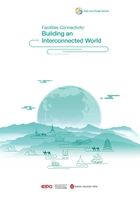
2. Infrastructure “deficit”
The considerable disparities in development levels of countries along the Belt and Road have caused substantial investment imbalances and variances as regards construction of their respective infrastructures. The uneven distribution of highways, railways, ports, and other infrastructure facilities hardly meets the requirements of economic and trade cooperation. The lack of interconnected transport facilities also greatly constrains any upgrading of regional and intercontinental cooperation. Therefore, the infrastructure of most developing countries, especially in Sub-Saharan Africa, lags far behind that of other regions.
Table 1: Infrastructure Evaluation Indices of Developing Countries in Various Regions Worldwide

Source: Global Competitiveness Report 2015-2016, World Economic Forum.
In order to improve national infrastructure and promote economic growth, various countries have steadily increased their infrastructure investment. Many countries and regions give priority in this respect to trade-related infrastructure. Inland transport infrastructure, represented by highways, railways, and inland waterways, relates closely to economic growth, and is particularly important in landlocked and vast countries. Emerging economies and developing countries’ demand for infrastructure investment is far greater than that of developed countries. In the future, therefore, emerging economies and developing countries will constitute the main impetus for investment in global infrastructure, and their sustained investment in and improvement of infrastructure will play a positive role in promoting global economic growth.
In the process of accelerating their industrialization and urbanization drive, developing countries need to step up infrastructure investment, but the financing gap in this regard remains broad. According to World Bank estimates, an additional investment of at least US$1 trillion will still be needed each year leading up to 2020 to maintain the current economic growth rate and meet future demands, bearing in mind that the annual infrastructure investment of developing countries is about US$1 trillion. African Export-Import Bank data show that only 40% of people in Africa have access to electricity, only 33% of the rural population has access to transportation, only 5%of agricultural land is irrigated, and there exists an annual infrastructure-demand gap of US$100 billion. Meanwhile, for purposes of upgrading old infrastructure facilities and spurring economic recovery, developed countries have also successively launched large-scale infrastructure construction plans. According to estimates by the American Society of Civil Engineers, an additional investment of US$3.6 trillion will be needed by 2020 to maintain the satisfactory state of American infrastructure. And with the development and deepening of regional economic integration, the demand for transnational infrastructure connectivity grows with each passing day. By 2030, the demand for infrastructure investment worldwide will hit US$50 trillion.
Infrastructure, especially large-scale infrastructure, entails high input cost, long construction periods, high technological requirements, slow cost recovery, and high-risk funding. All these factors inhibit the entry of private investment into these fields. Infrastructure investment has long relied heavily on government budget support, but the relatively poor developing and underdeveloped countries are hard-pressed to guarantee financial support in this regard, thus constraining both economic growth and improvements in people’s living standards. After the international financial crisis struck in 2008, the business of international financial markets and financial institutions shrank in an all-round way, and most countries, even certain developed countries, began to suffer shortfalls in mid- and long-term infrastructure investment.

(1)Justin Yifu Lin, New Structural Economics: The Framework to Rethinking Development, p. 14, World Bank, Washington DC, 2012.